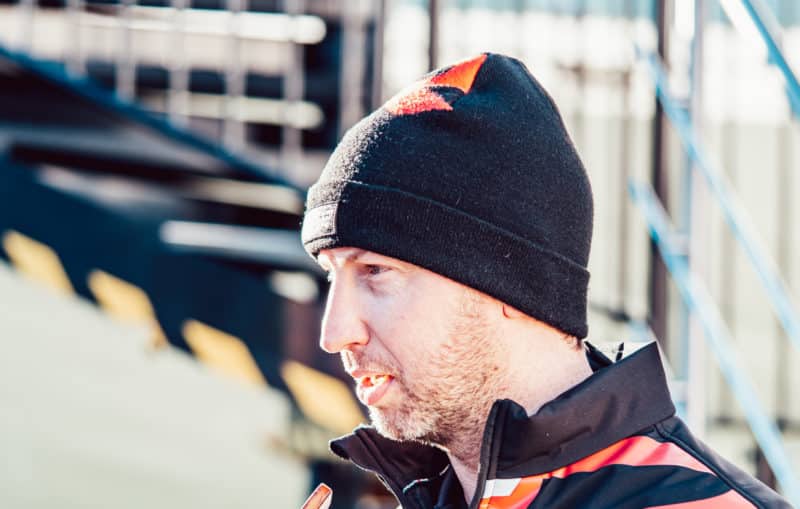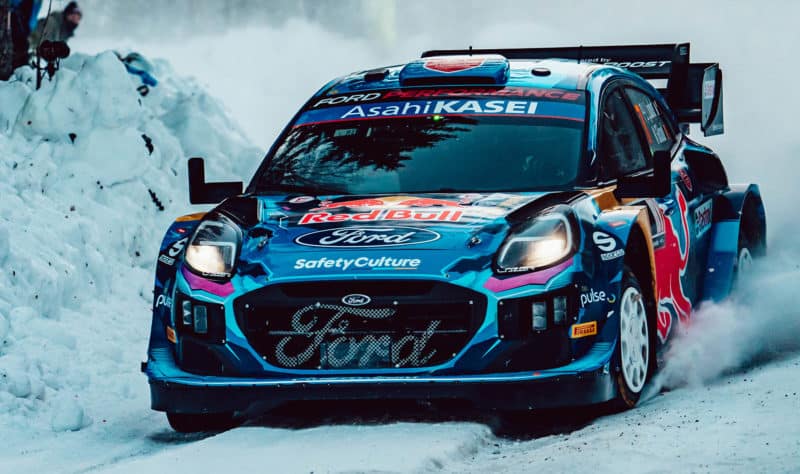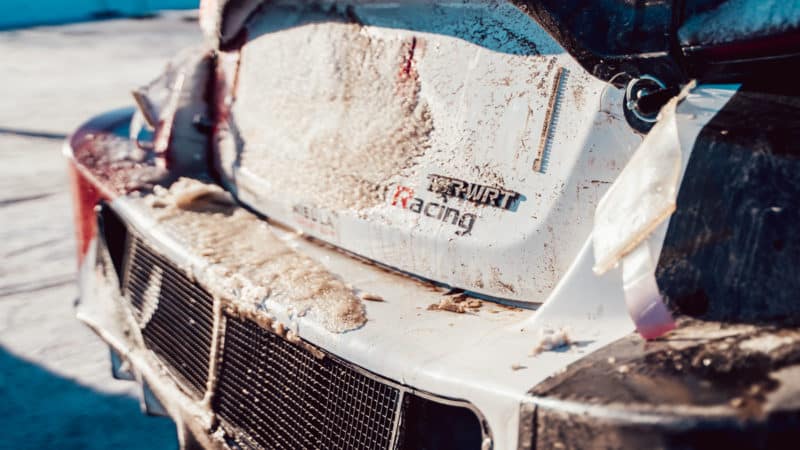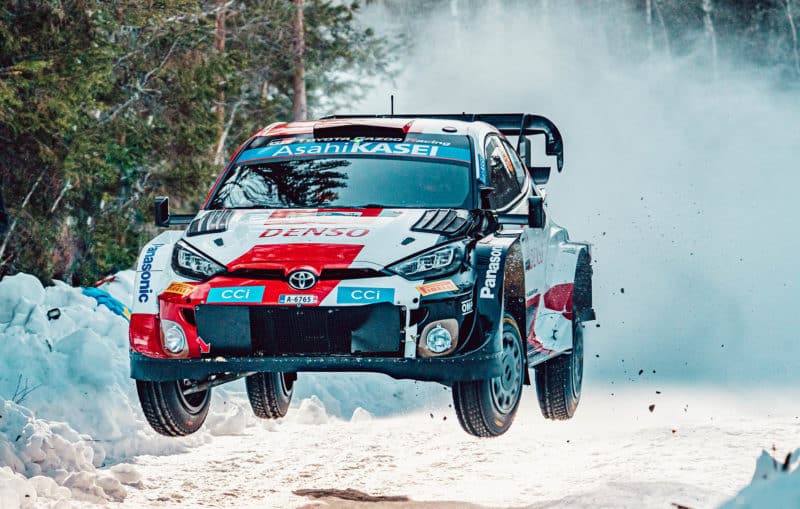That same climactic cycle has also led to the stages running fast, really fast. Heavy snowfall mixed with thaw conditions creating a bullet-hard layer of ice across many of the stages. This gives great bite for the studs and low rolling resistance. Mix in a route that has fewer corners than usual, and you have a recipe for speed. Through the fastest sections the Rally1 cars were topping out at over 120mph, on a surface that one can barely even walk on!
Tyre tactics
The fast-running ice brings its own quandaries for teams. Toyota technical director Tom Fowler explains: “In terms of the setup of the car, the most important thing that everyone’s trying to do is keep the studs alive for as long as possible. Anytime where you have more ice base, not a deep snow situation, your stud condition and your tyre condition becomes huge performance factor.”

Tom Fowler on duty at Rally Sweden
There is only one compound and stud pattern available to drivers, meaning strategy choices hinge around how many spares to carry and chassis setup. “You’re looking for a setup which is fast, but which won’t use the tyres at a rate that means they run out,” says Fowler, adding. “That is the case both inside each loop, but also across the rally because we don’t actually have enough new tyres to run fresh for the complete event.” Toyota puts what Fowler calls a tyre insurance package into practice on the second full day of running, with all its cars carrying a spare pair. Hoping that fresh studs could help its drivers keep in touch with the leaders, Ott Tänak and Craig Breen.
However, whether the setup compromises made to preserve the tyres through Saturday worked was questionable, with hard-charging Toyota driver Kalle Rovanperä complaining that changes made overnight hadn’t work, saying: “We need to find something, I’m understeering everywhere. I could be much faster but now I am just fighting a lot.”
Concurrently, Pirelli rally manager Terenzio Testoni noted that with the colder conditions and more consistent surface provided had in fact improved tyre life, with the tyres it had seen after the first round of stages coming back with most of their studs intact. Rallying is about compromise and even the well-oiled Toyota machine can get that balance wrong.

Ford’s WRC Puma on the stages in Sweden
Battle the elements
The temperature fluctuations over this year’s rally had been considerable. During the first days, the mercury sat at a balmy -1°C. However, as Saturday rolled around, it plummeted to around -10°C (-15°C overnight). These lows create their own challenges for both crews and machinery. Batteries and fluids suffer in cold conditions, so all of the teams ran specific packages with larger batteries and lower viscosity oils to keep the cars alive. Snow also presents its own set of problems for serviceability. Fowler explains: “It tends to go into the same places as mud, but it freezes solid, which makes it more difficult to remove. So we have some different arrangements of covers, parts we tape up and that sort of thing, compared to other rallies.”
The snow build-up can even cause issues for drivers out on the stages. The weight balance of a Rally1 car is carefully set, but over a stage several kilograms of snow can pack itself into the chassis, particularly at the rear. The result is an ever-shifting balance, not ideal when consistency and confidence in the car is of prime importance. Therefore, it is not unusual to see drivers stopping in the road sections and chipping these accumulations off to keep their steeds as predictable as possible.
For the mechanics, like M-Sport’s Chris Glaister, working on the cars can also be tricky. Unlike muddy rallies, snow can’t be hosed off. “All the ice gets up in the wheel arches and on the suspension components, as you clear everything out you’re covered in ice and water. It does melt a bit as they come into the warmer tents, so you get water everywhere,” he says.

The build-up of snow and ice can change the balance of a WRC car
Compared to days of old, servicing conditions are not too harsh; if you’re Toyota or Hyundai mechanic, the mobile hospitality/workshop units are more substantial than some houses. However, M-Sport still works out of marquees, but according to Glaister: “There is plenty to do to keep us warm between stages, prepping panels for the inevitable body damage.”
Does Sweden lead to more damage than other rallies? “We know that leaning on snowbanks is going to damage bumpers and quarters. But compared to really rough rallies such as Kenya; where the panels and suspension take a huge beating and the dust gets everywhere, Sweden is not so bad.”
As the second day of Rally Sweden rolled on, the temperature rose once again and despite covering the same stages as in the morning, drivers were set to be confronted by a totally different set of conditions. Every rally is unique, but the ever-evolving nature of the Swedish elements and sheer speed of the stages surely makes it one of the most thrilling of the year.

